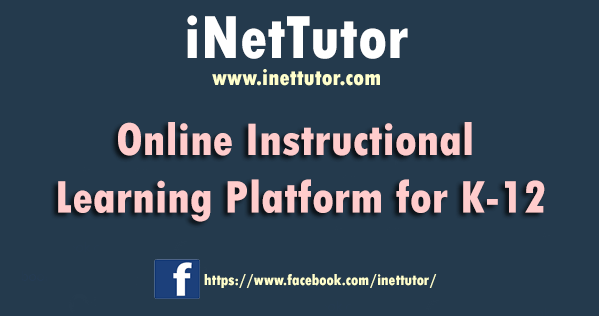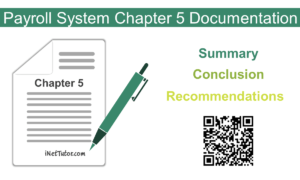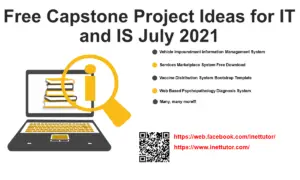Online Instructional Learning Platform for K-12
The project entitled Online Instructional Learning Platform for K-12 is an alternative way of providing the students the lessons and activities for their subjects using the internet and other ICT materials. In this platform, the teachers can upload their lessons (power point and video presentation), assignments and activities. Students will be able to read and browse the uploaded materials by their teachers. Parents are also part of the system; they can use the system to monitor the progress of their children.

The said project is available in PHP and MySQL, CMS version in WordPress is also available. Full documentation of the project is also part of the package.
Related Studies
On Web-Based Instructions…Global Innovation is likely to need an organizational location which allows adequate freedom for the innovator while remaining close enough to the work of conventional education and its decision makers for it to achieve integration with the regular education service.
Various studies state; when students direct their own learning in more concrete ways through web-based instruction, faculty must incorporate pedagogical tactics that prepare students to encounter information and knowledge in their variant forms. In general, students must write more frequently and work more independently in web-based courses; hence they tend to recognize their role as active seekers of knowledge (Canada, 2000). Web-based curriculum design should account for this and other characteristics of contemporary learners. Murphy (2000) and Ausburn (2002) found that today’s students are inclined to need more motivation to learn; they often learn by experimentation experimentally, through an experiment and involvement rather than through traditional means of reading and listening.
On Online Learning… The online learning environment can account for contemporary student learning styles while still supporting pedagogical values such as critical analysis, adaptability, and intellectual rigor.
This is critical when the student/faculty interaction is mediated by online technology. Web-based instruction offers profound possibilities for creativity, access, and equality in education–we must understand that concerns of epistemology and ethics need to be confronted in order to realize those potential benefits. (http://www.thefreelibrary.com/The+nature+of+knowledge+in+web based+learning+environments-a0114168056)
On Computer Based Educational System…More recently, the spread of computer-based educational systems has transformed the processes of teaching and learning (Squires, Conole, & Jacobs, 2000). Potential benefits to learners include richer and more effective learning resources using multimedia and a more flexible pace of learning. In the last few years, the emergence of the Internet and the World Wide Web (WWW) have offered users a new instructional delivery system that connects learners with educational resources and has led to a tremendous growth in Web-based instruction. Web-based instruction (WBI).
According to (Hilary Perraton and Charlotte Creed, 2000) The use of technologies for students in school, mainly using broadcasts and computer-based technologies, are for the most part designed to raise quality or to support curricular change.
A number of studies (Relan and Gillami, 1997) states WBI as: “…the application of a repertoire of cognitively oriented instructional strategies within a constructivist and collaborative learning environment, utilizing the attributes and resources of the World Wide Web.” Khan (1997) stress Web-Based Instruction (WBI) as: “…a hypermedia-based instructional program which utilizes the attributes and resources of the World Wide Web to create a meaningful learning environment where learning is fostered and supported.” (http://www.igi-global.com/bookstore/Chapter.aspx?TitleId=13200)
On Learning Styles of the Students…According to IT dynamics Philippines Classroom teachers rely on a number of visual and unobtrusive cues from their students to enhance their delivery of instructional content. A quick glance, for example, reveals who is attentively taking notes, pondering a difficult concept, or preparing to make a comment. The student who is frustrated, confused, tired, or bored is equally evident. The attentive teacher consciously and subconsciously receives and analyzes these visual cues and adjusts the course delivery to meet the needs of the class during a particular lesson.
Study state not all students learn the same way — some are visual learners, some auditory, some both, some neither. Interactive web-based tools include a variety of learning modalities to motivate students and support diverse learning styles. Teachers desire to maintain continuity in a time-limited classroom, but must strive to challenge gifted students while helping struggling students succeed. A big advantage of web-based instruction is the ability to provide one-to-one tutoring in a self-paced learning environment. (http://www.itdynamicsphil.com/resources.php)
On Electronic Learning … A great number of colleges and universities nationwide have ventured on e-learning as it delivers more training to students at its fast, convenient, and consistent advantages. It has also been very effective versus solely classroom-based models. The JRU College Division Computer Science Department has constantly been delivering traditional lectures through the use of technology as to software demonstrations and PowerPoint presentations. As always, a key to learning and to e-learning sites is its high quality content and instructional design that makes these courses effective. (http://www.elearningap.com/eLAP2009/Proceedings/09_Full_Ryan%20A.%20Ebardo.pdf)
On Instructional Technology … With the tendency of most educators and learners to depend more and more on electronic technology, it seems that the use of printed educational materials is fast diminishing. Most of the time, a lot of educators and learners go to the internet for answers to their information needs. Reasons for this are increasing book prices, overcrowding of libraries, and scarcity of books.
In lieu thereof, the government supported Introduction to the field of Instructional Technology: careers, job roles, organizations, scholarly literature, and requisite technology skills; Introduction to instructional technology course content and initial planning for students’ programs. It is therefore important that schools adopt this innovation for lectures in order to enhance and make students fully equip to face the global competition. (http://www.e-turo.org/?q=node/227)
Existing studies/Prior art
System and Method for Compiling and Distributing Modular Publishing and Instructions Materials in an Electronic Environment
Abstract of EP 1324212 (A2)
The disclosed systems and methods for computer aided instruction and electronic publishing employ modular design approaches whereby instructional and informational content is broken into multi-level objects including self-contained electronic learning and electronic content objects. The system and method facilitates the development, maintenance and modification of course and publication content because they may be advantageously located centrally in a large library of independent electronic learning and electronic content objects that serve as building blocks for electronic courses and publications. Modular CAI systems and methods of the invention can be used to monitor student progress both by administering examinations and tracking what content particular students have accessed and/or reviewed.; In preferred embodiments, the invention includes authors using the Internet-accessed tools and templates to compile instructional and informational content, and the subsequent delivery of web-based instructional or informational content to end users such that the end users can receive and review such content using computing devices running standard web browsing applications.
Compiling and Distributing Modular Electronic Publishing and Electronic Instruction Materials
Abstract of US 2003163784 (A1)
The disclosed systems and methods for computer aided instruction and electronic publishing employ modular design approaches whereby instructional and informational content is broken into multi-level objects including self-contained electronic learning and electronic content objects. The system and method facilitates the development, maintenance and modification of course and publication content because they may be advantageously located centrally in a large library of independent electronic learning and electronic content objects that serve as building blocks for electronic courses and publications. Modular CAI systems and methods of the invention can be used to monitor student progress both by administering examinations and tracking what content particular students have accessed and/or reviewed. In preferred embodiments, the invention includes authors using the Internet-accessed tools and templates to compile instructional and informational content, and the subsequent delivery of web-based instructional or informational content to end users such that the end users can receive and review such content using computing devices running standard web browsing applications.
Cased-Based, Agent-Assisted Learning System and Method
A case-based, agent-assisted learning tool is described that operates from a remote terminal. The case-based, agent-assisted learning tool permits delivery of animated pedagogical agent technology to remote terminals. The case-based agent-assisted learning approach supports collaborative instruction of multiple students working together. Each problem is presented as a simulated “case” which the students must solve. The agent at a remote terminal is provided with just enough knowledge of the subject matter to be able to handle the case appropriately. This simplified approach makes it possible to download to the remote computer on demand just the information needed to enable the pedagogical agent to support the student’s learning activities. This in turn makes it possible to integrate case-based agent-assisted learning with Web-based instructional materials.; The case-based agent-assisted learning approach is capable of a wide range of pedagogical interactions, including question answering, hinting, opportunistic instruction, and referrals to background literature. (http://patents.ipophil.gov.ph/patsearch2/)Abstract of WO 0067223 (A2)
Synthesis
The literatures and existing prior arts that presented in this chapter gave sufficient information to the researchers and provide ideas that serve us the guide for the study of this system.
The concepts of the study on the interactive web-based learning materials help motivate students and support various learning techniques. Educators desire to maintain continuity in a time-limited classroom and aims to furnish the student knowledge in efficiently and effectively, must strive to challenge gifted students while helping striving students succeed. A big advantage of web-based instruction is the ability to provide one-to-one tutoring in a self-paced learning environment;
This study will greatly give advancement to the K-12 students, for the challenges faced by educators’ concern redefining literacy in terms of the new skills and competencies that will be relevant to a more international and increasingly technological society; however the availability of internet and YouTube connections are needed for this study to carry out its benefits.
Credits to the authors and developers of the research project.
You may visit our Facebook page for more information, inquiries, and comments. Please subscribe also to our YouTube Channel to receive free capstone projects resources and computer programming tutorials.
Hire our team to do the project.

